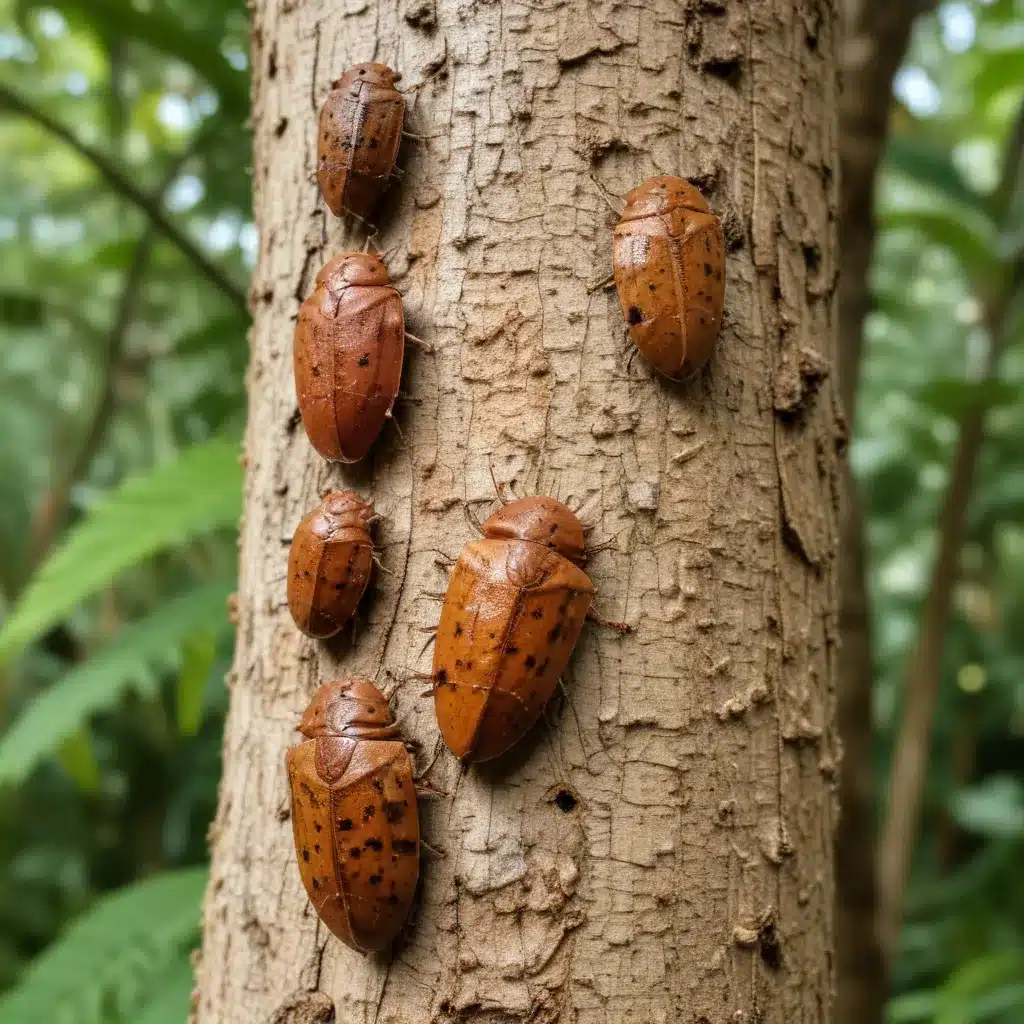
Managing Invasive Scale Insects that Threaten Subtropical Tree Species
Subtropical regions of South Florida face a unique challenge in maintaining the health and resilience of their diverse tree canopies. Scale insects, in particular, pose a significant threat to many prized tropical and subtropical tree species. These tiny pests can quickly spread, sapping the vitality of valuable landscape trees and compromising their storm hardiness. As an arborist specializing in South Florida conditions, I’ll cover the key strategies for identifying, controlling, and preventing invasive scale infestations to protect your cherished trees.
Pest Control Strategies
Effective scale insect management requires a multi-pronged approach tailored to your specific trees and environmental conditions. The first step is proper identification – many scale species look similar, but their lifecycles and susceptibilities vary. Common culprits in South Florida include the Florida red scale, brown soft scale, and white peach scale. Examine your trees closely for telltale signs like waxy coatings, discolored foliage, and sticky “honeydew” secretions.
Once you’ve pinpointed the invading scale, integrated pest management (IPM) techniques can curb their spread. IPM blends biological, cultural, and selective chemical controls to maintain long-term tree health. Beneficial insects like lady beetles and parasitic wasps are natural enemies of scale – you can encourage them by avoiding broad-spectrum pesticides. Prune heavily infested branches, and apply horticultural oils or insecticidal soaps to smother existing colonies. For severe infestations, strategic use of targeted insecticides may be necessary, but monitor closely to avoid harming beneficial organisms.
Regular monitoring is essential to catch scale early, when they’re easiest to manage. Conduct routine inspections, paying close attention to the undersides of leaves and branch crevices where scale like to hide. Utilize pheromone traps or sticky cards to detect scale populations before visible damage occurs. Prompt, proactive treatment is key to protecting your valuable trees.
Tropical Storm Preparedness
In South Florida, hurricane season poses an additional threat to tree health that can compound scale insect woes. Robust, storm-hardened trees are better equipped to withstand high winds and heavy rains. Proper cultural care, including judicious pruning and nutrient management, helps strengthen trees against nature’s fury.
Avoid excessive pruning that weakens a tree’s structural integrity. Instead, focus on thinning the crown to reduce wind resistance, and selectively removing dead, damaged, or rubbing branches. Maintain appropriate soil fertility and irrigation to promote vigorous, flexible growth. Staking young or newly transplanted trees can also enhance their resilience.
Beyond individual tree care, have an emergency response plan in place. Identify your most valuable, vulnerable specimens and prepare protective measures like bracing, cabling, or even pre-emptive removal. After a storm, quickly address any fallen branches or uprooting to prevent further decline. Coordinating with local arborists and tree services can ensure rapid recovery.
Palm Tree Maintenance
Palms are a beloved part of the South Florida landscape, but they have unique needs that require specialized care. Nutrient deficiencies, poor drainage, and improper pruning can all compromise their health and leave them susceptible to insect pests.
Provide palms with a balanced fertilizer regimen tailored to their specific requirements. Maintain consistent soil moisture, but ensure adequate drainage to prevent waterlogged conditions that invite rot and scale. When pruning, remove only dead, damaged, or dying fronds – avoid excessive crown thinning, which can stress the palm.
With diligent attention to their specialized needs, palms can thrive alongside other subtropical trees. Consider planting native or adapted cultivars that are naturally pest-resistant and adapted to the local climate.
Recommended Subtropical Tree Species
Not all trees are created equal when it comes to South Florida’s challenging conditions. Native and well-adapted subtropical tree species exhibit innate resilience against pests, diseases, and harsh weather. Some excellent options include live oak, mahogany, royal poinciana, and gumbo limbo.
These trees not only enhance your landscape’s aesthetic appeal, but also provide valuable ecosystem services like shade, pollution filtration, and wildlife habitat. Their robust constitutions make them less vulnerable to invasive scale and other threats. Pair them with complimentary understory plantings for maximum biodiversity and environmental benefits.
Fungal Disease Management
While scale insects damage trees through direct feeding, many destructive fungal pathogens also threaten subtropical trees in South Florida. Common culprits include Phytophthora root rot, anthracnose, and sooty mold. Vigilant monitoring, disease prevention, and strategic fungicide application are essential to keep these fungi at bay.
Promote healthy, vigorous growth through optimal cultural care. Ensure proper soil drainage, avoid overwatering, and maintain adequate nutrient levels. Timely removal of dead or infected plant material can limit the spread of fungal spores. When fungicides are required, choose products labeled for your specific tree species and disease, and apply them according to label instructions.
Planting Guidelines
Proper site selection, transplanting techniques, and ongoing aftercare are crucial for establishing subtropical trees that can withstand the rigors of South Florida’s climate. Choose a location with sufficient sunlight, appropriate soil conditions, and enough room for the tree to mature.
When transplanting, minimize root disturbance and protect the trunk from mechanical damage. Provide generous irrigation during the establishment phase, and replenish organic mulch to retain soil moisture and suppress weeds. With the right planting approach and diligent maintenance, your new trees will be well on their way to thriving.
By combining these comprehensive strategies for pest control, storm preparedness, palm care, and thoughtful plant selection, you can safeguard the health and longevity of your cherished subtropical trees. For more information, consult the experts at South Florida Trees.


